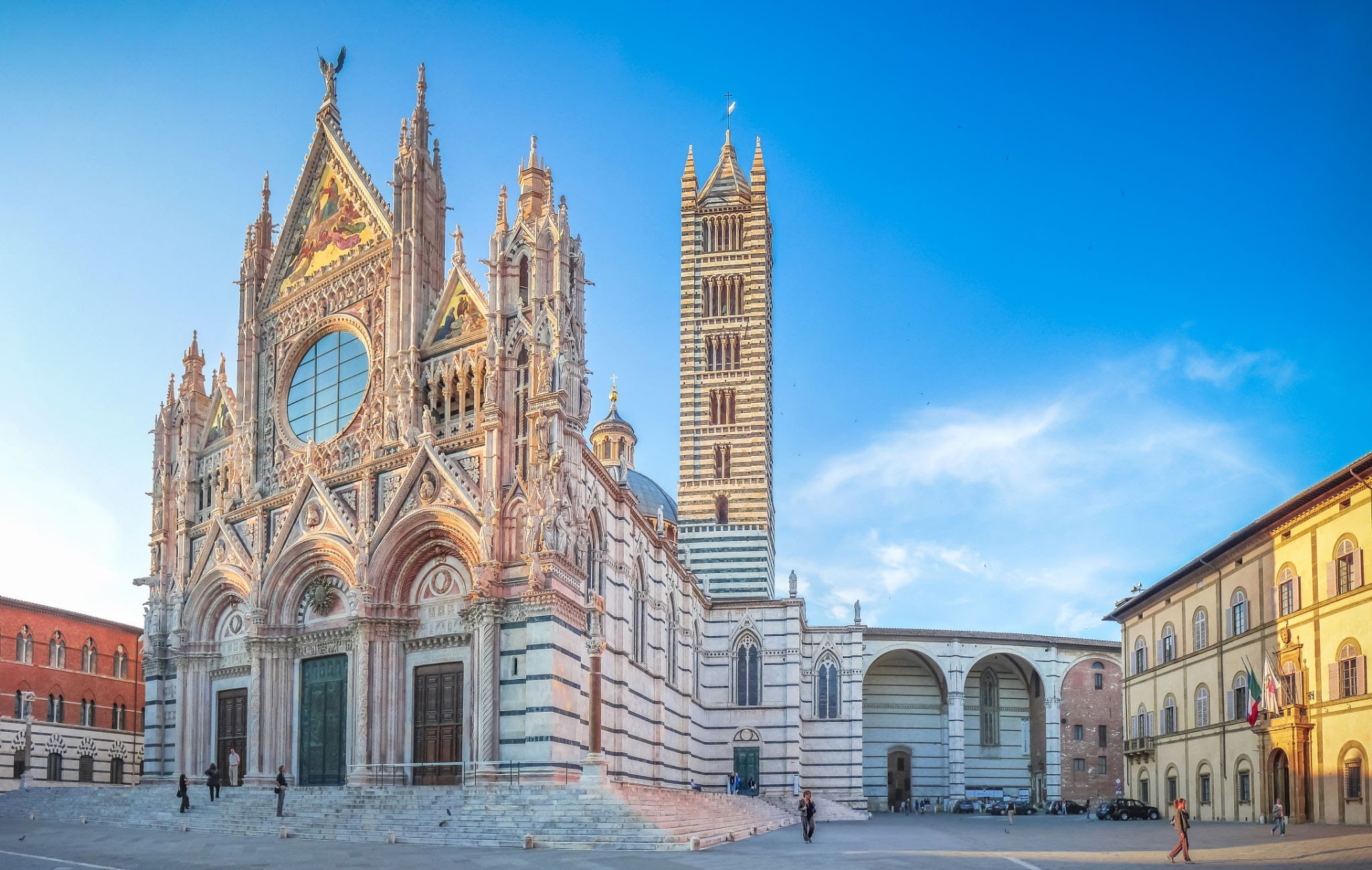The Cathedral’s museum complex

The visit inside the Cathedralis just unmissable: it was built in the 12th century in place of an older church, and dedicated to the Assunta. The works in the cathedral went on for two centuries, with the result of a wonderful Roman-Gothic building, characterized by its black and white stripes, which hosts many important artworks.
The floor of the Cathedral is highly suggestive, it’s made up of nearly 1300 square meters of colored marbles, murals, mosaics, which form a canvas with 56 Christian-and-Pagan themed, realized between the 1300s and the 1500s.
Along the left aisle you’ll find the Piccolomini marble altar, to whom Michelangelo also worked, and next to it is the Piccolomini Library, built in order to store valuable books belonging to a member of this Sienese library, the Pope Pio II, a lover of art and literature and founder of the little town of Pienza. The library is decorated with frescos which are still nearly intact, and never even restored, realized by the popular painter Pinturicchio between 1502 and 1509.
More important works can be seen in the left transept, among which you can find the St. John the Baptist Chapel, with the bronze statue of the Saint, realized by Donatello.
The octagonal pulpit by Nicola Pisano (1265-1268) is also remarkable, it portrays scenes from Jesus’s life and the Last Judgement, with 377 characters and 70 different animals.
In the right-hand transept stands the Voto Chapel, founded by the Pope Alexander VII who originally commissioned the work, just like St. Peter’s Square, to a big Barocque artist, Gian Lorenzo Bernini.
The route ‘’Porta del Cielo’’ gives a unique perspective on the inside of the Cathedral, across the attics of the Cathedral.
By exiting the building, on the right side, you can find the rests of an unfinished project: the facade, also called The Facciatione, of a ‘’New Cathedral’’ which should have included the current church as the transept. The project was interrupted due to the Black Death, but you can still have access to it by entering the Opera Museum. You can enjoy the unique view from above, seeing squares and streets but also the countryside that surrounds the town. The museum stores many art masterpieces that used to decorate the Cathedral, among which the Maestà painted by Duccio di Buoninsegna for the major altar.
According to the amount of time we’ll have left, we might be able to deepen the knowledge of this big museum by walking down the marble stairs next to the Cathedral, coming down to the entrance of the Crypt, covered up by debris for centuries and only recently discovered in 1999, decorated with frescos dated half-11th century, portraying Jesus’s life. At the bottom of the stairs, there’s the Baptistery, built around the second half of the 12th century, dedicated to St. John the Baptist, and inside is stored the baptismal font realised by important sculptors, like Jacopo della Quercia, Ghiberti and Donatello, and represents the shift from the Gothic style to the Renaissance.



